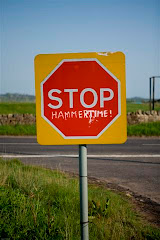how environmentally friendly can your board really be? it's worth some thought, for sure.
"Take balsa: You have this great big tree growing in the Ecuadorian jungle. Somebody cut it down, hauled it out of the jungle, sawed it into chunks, hit it with a fungicide, kiln dried it to get out the tremendous amount of water in green balsawood, wrapped it, put it in a container, trucked it to a harbor, loaded it on a freighter, shipped it, unloaded it, trucked it someplace else, and then someplace else, then someplace else. Then sawed it up further, power tools and more power tools....... Now, none of these are exactly what I'd call environmentally positive. From the chainsaw gas and oil that was used to cut it down to the heavy fuel oil (or high sulfur coal, for instance) that ran the plant that generated the electricity to run the power tools that finally whittled that piece of balsa into shape, you got lots of fuels, emissions, byproducts, waste products, what have you. How the scraps and dust and shavings are dealt with: if there's balsa bits and such discarded in Ecuador it rots and returns to the soil, but sealed in a trash bag in a landfill in the US it's another story. So, how much petrochemicals and emissions went into the 'green' balsa board versus, say, a polyurethane or polystyrene foam board with fiberglass and resin of some sort on it? How much waste and how was it dealt with? And any other resources...... There are quite a few parts of the balsa story that I am sure I'm missing. It's a helluva complex set of steps. As are all ways of making a board. But the materials used themselves are just a small part. The whole thing needs to be considered before you can really call something 'green'. " - comment by doc, on swaylocks.
http://www.swaylocks.com
Subscribe to:
Post Comments (Atom)




.jpg)









No comments:
Post a Comment